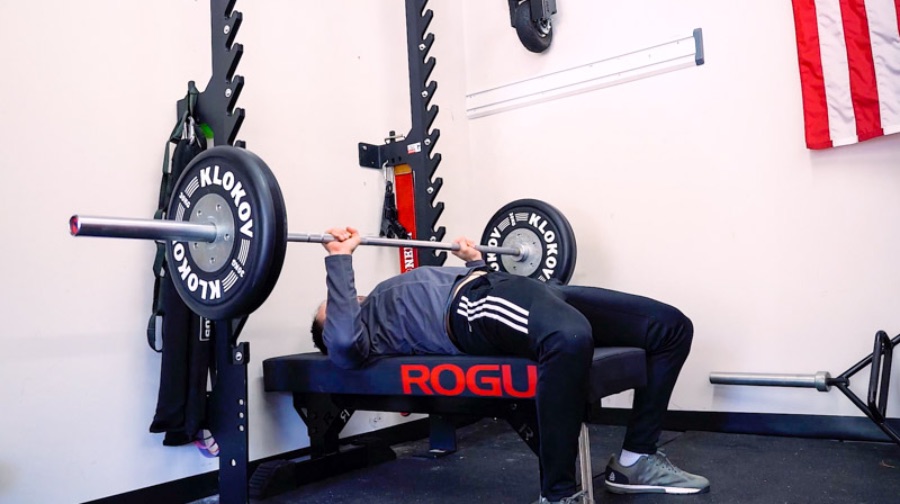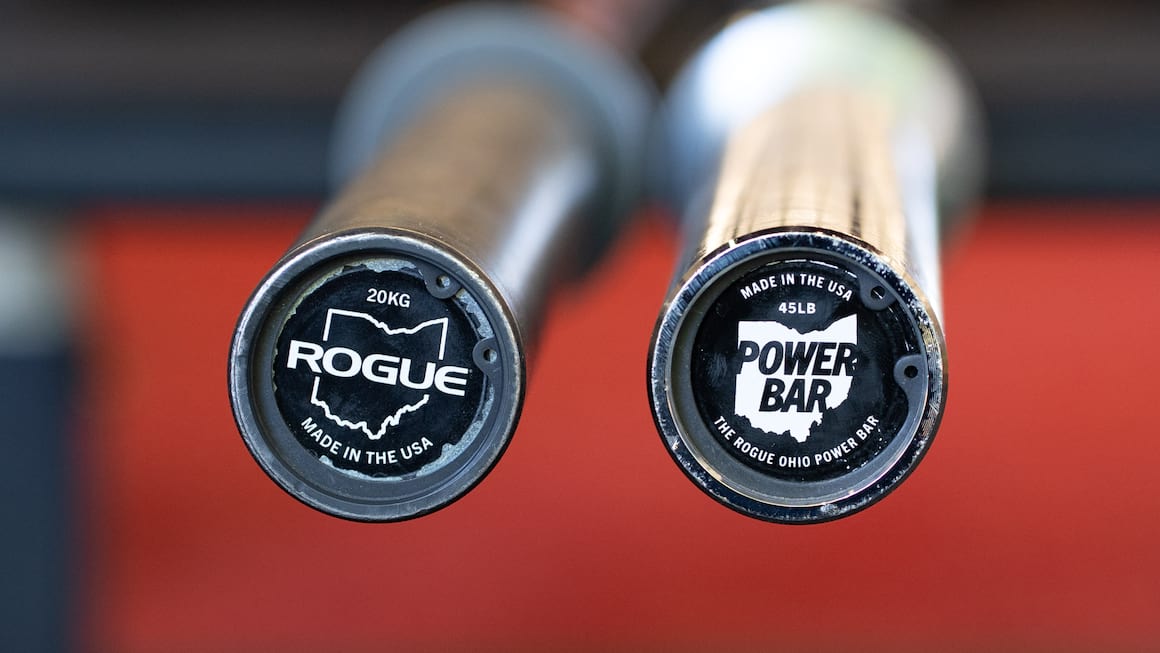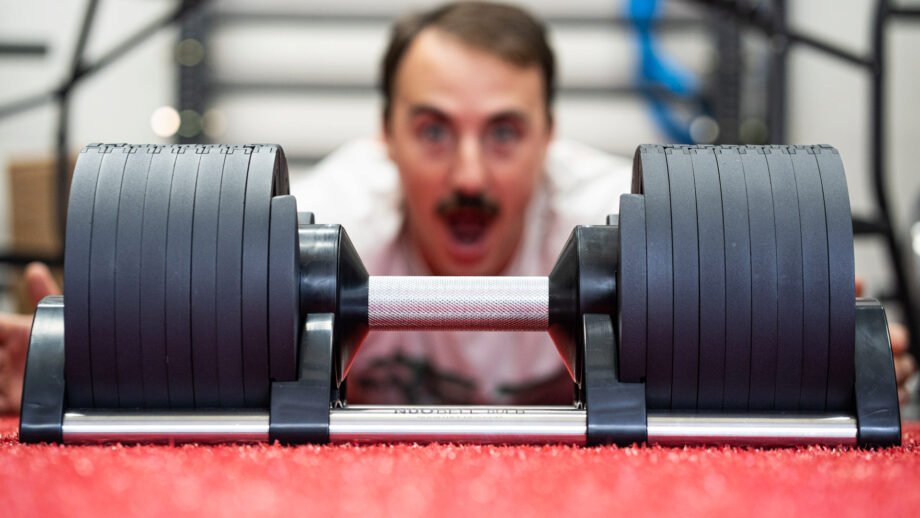When it comes to lifting weights, bodybuilding, or simply general exercise, the bench press, like the push-up, is likely one of the first images that come to mind. The traditional bench press is a classic exercise that remains an essential staple of most non-bodyweight-based strength training routines. And for a good reason: It is a critical component of developing upper-body muscle growth.
However, while bench pressing can contribute significantly to your gains or fitness goals, you must ensure you do it right. Without proper technique and form, bench pressing can cause problematic stress or injury to your shoulder joints, wrists, or chest (to name a few).
I should note that technique, form, and approach to the bench press can change depending on who you ask (everyone’s got an opinion). However, in this article, I intend to use the most definitive facts I’ve found to help you improve your bench press technique, further understand the exercise’s benefits, and help you prevent injuries or pain while getting the most out of this classic exercise.
How To Bench Press
- Exercise name: Bench press
- Exercise type: Compound
- Target muscle group: Pectoralis major and minor
- Secondary muscles: Anterior deltoids, triceps brachii
- Exercise type: Strength
- Equipment needed: Barbell, dumbbells, bench
- Difficult level: Intermediate
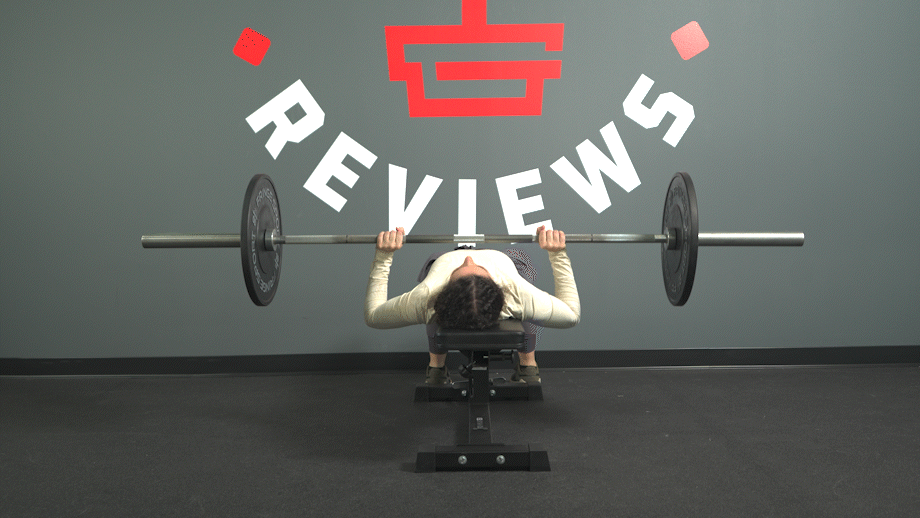
Five guidelines for a proper traditional bench press:
- Lie on your flat bench with the bar parallel to your eyes and feet on the floor.
- Firmly take hold of the barbell with your hands placed roughly a bit more than shoulder-width apart (the wider the grip, the more your chest muscles are activated).
- Breathe in and engage your core while bringing your shoulder blades together as you slowly lower the barbell off the rack to your chest (aim for near your nipple line, however this will vary from person to person).
- Extend your elbows without resting the bar while engaging your chest muscles to push it back upwards to its original position off the rack (above your shoulders). Make sure you exhale as you raise the bar, maintaining a consistent breathing rhythm.
- Continue for desired repetitions.
Trainer Tips for Bench Press Form
Here are some helpful tips for engaging in a classic bench press correctly and safely:
Find the Right Starting and Finish Positions
For the traditional bench press, you are lowering the barbell and pressing it back upwards in a straight line that is almost in a J-shape, not perfectly vertical. Your starting and lowered positions determine this line.
A good bench press starting (and finishing) position off the rack is to hold the barbell directly above to your shoulders or upper back. From there, slightly rotate your elbows inward, and lower the barbell till it touches your chest (lowered position). This lowered position or landing point can vary based on a person’s arm length, torso size, or general body type. However, I suggest a landing position slightly above your nipple line as a broad guideline.
RELATED: Best Budget Barbells
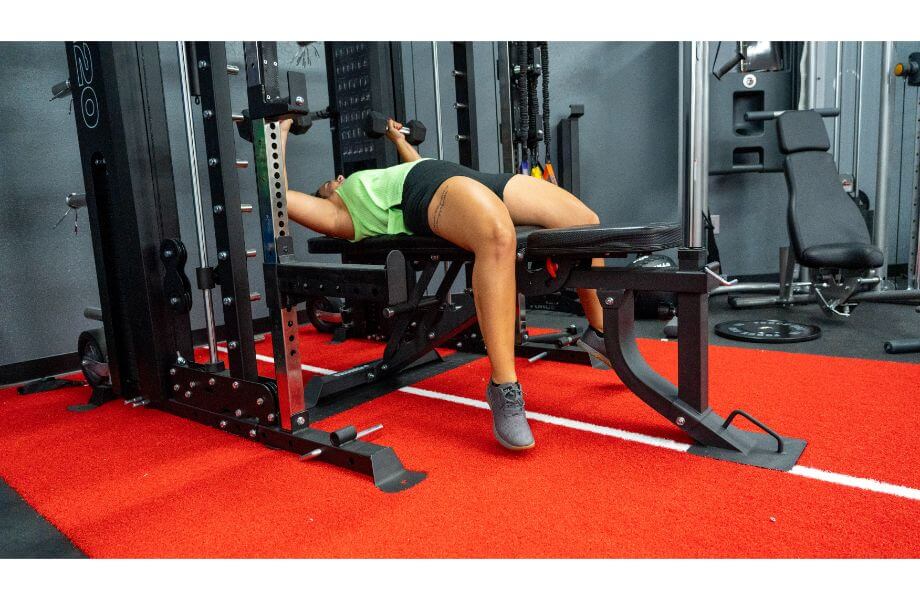
When returning to your starting position, push the barbell upwards and toward your face. This movement should resemble a pressing motion that moves upwards in a diagonal line rather than a vertical one (unlike guillotine presses).
Lowering the barbell in a straight vertical line may lead to your elbows flaring out, potentially compromising form and gains and leading to shoulder inflammation. In addition, pressing upwards in a diagonal rather than vertical line will help you to establish your upper back as a means of support, preventing strains in your middle or lower back and isolating pressure where it needs to be.
The Strategic—Subtle—Arch
Another common benching mistake that can cause shoulder pain is pressing with a completely flat back. This is because your upper back acts as a source of support for your form, with your lower body stabilizing you on the bench. Therefore a subtle arch between the bench and your middle or lower back is a safer position to take on the bench.
The degree of good bench pressing arch varies based on your body type. While some demonstrate an exaggerated arch, like powerlifters, your arch is best determined by the curve in your middle or lower back resulting from your upper back and hips being firmly planted on the bench.
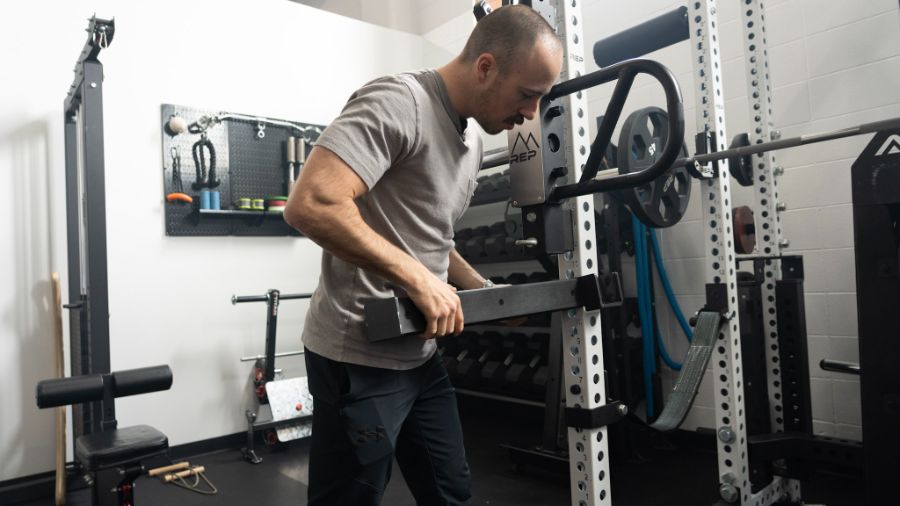
Not arching your middle or lower back can lead to additional strain on your shoulders, compromised bench press technique, and uneven weight distribution along the bench.
Practice Safety
Training with a spotter is a great way to challenge yourself to experiment with heavier weights or more reps. However, a spotter is not an excuse to dive into super heavy weights you aren’t ready to handle. A spotter should provide an additional element of barbell safety when training, not training wheels for the bench!
Notably, if you don’t have a spotter and you are training alone at home or don’t have a reliable partner at the gym, be careful when pushing yourself with heavier weights and use safety straps or pins.
When training alone, you can increase the reps of weight you are already comfortable with to focus on endurance and toning. Or a helpful trick to better establish safety when benching on your own is not to add clips to each side of the barbell, so you can dump the weight plates quickly if you can not bring the barbell back up to its resting position on the rack. This is something that requires practice!
Keep Your Shoulders Down and Back
Keep your shoulders down and back. Packing them in while you engage those upper back muscles for support should help you more safely and accurately move the barbell. On the contrary, not keeping your shoulders down could lead to your shoulders bearing too much of the barbell’s weight. This could lead to potential injuries and take away from the effects of this chest exercise.
Prioritize Range of Motion Before Heavier Weight
When moving the barbell up and down during a bench press, the more controlled your movement is, the better it is!
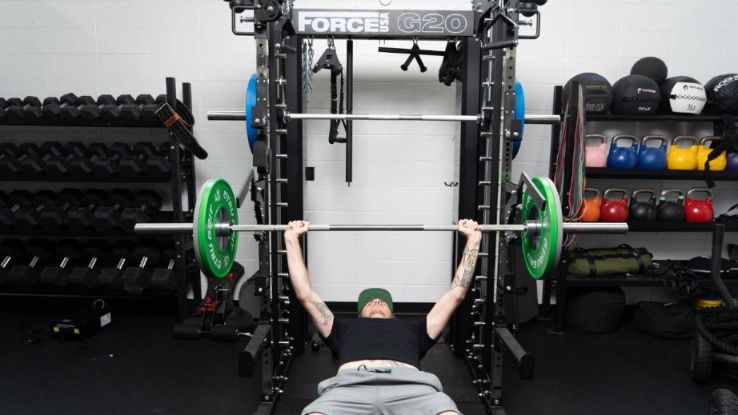
While some may be able to slightly lower and quickly raise hundreds of pounds, properly bench pressing with the correct technique and a full range of motion will help you to best experience the benefits of the bench press to the fullest (and avoid injuries in the process).
Common Bench Press Mistakes
As you work to master the bench press, be aware of these common mistakes:
Don’t Bounce the Bar Off Your Chest
Try to lower the bar gently onto your chest and assertively raise it with complete control. You don’t want to lower the barbell without utilizing your strength. And you definitely don’t want to rely on the bar bouncing off your chest or sternum as a way to more easily raise it back up (helloooo broken ribs!).
This may sound crazy, but it is a common occurrence in gyms. And one that can prevent gains in muscle mass from the exercise, compromise proper form, and lead to injuries or chronic pain over time.
Don’t Do the Same Thing Every Time
While some gym rats may suggest otherwise, mix up your bench pressing sessions and the weight and reps you do during them each time. Bench pressing can significantly help build muscle in your arms, chest, and shoulders. Still, to best achieve this, you want to allow your muscles time to recover and be consistently challenged with various training routines to prevent both strains or stagnation in muscle growth.
To do this, split up and diversify your bench pressing sessions during the week rather than doing them every day. Instead, aim for multiple days with periods of recovery between them. This almost always leads to faster strength gains for most lifters.
RELATED: What Is Progressive Overload?
More specifically, focus each session on a different bench pressing goal, especially if you are a beginner. For example, one day focused on strength (heavy weight and fewer reps), one day focused on hypertrophy/muscle growth (moderate weight and reps), and one day focused on endurance (lower weight and higher reps with explosive force).
This method is also known as daily undulating periodization, or DUP. It is a type of approach to strength training where weight and reps fluctuate every session to diversify muscle stimulation and prevent a fitness plateau. Notably, a 2002 study1 found that lifters engaged in a DUP approach to weight training experienced significantly more strength gains than those who did not.
Bench Press Variations
Here are some other bench-pressing variations to experiment with:
Floor Press
When lying on the floor, slightly arch your back and bring your heels to your butt so your feet are firmly planted with your knees pointing upwards. Unrack the barbell from the bottom bracket of your rack. Bring the barbell down slowly until your rear arms touch the ground, then return it to your starting position. You can also do this with dumbbells or by putting bumper plates on a barbell and simply lifting it off the ground.
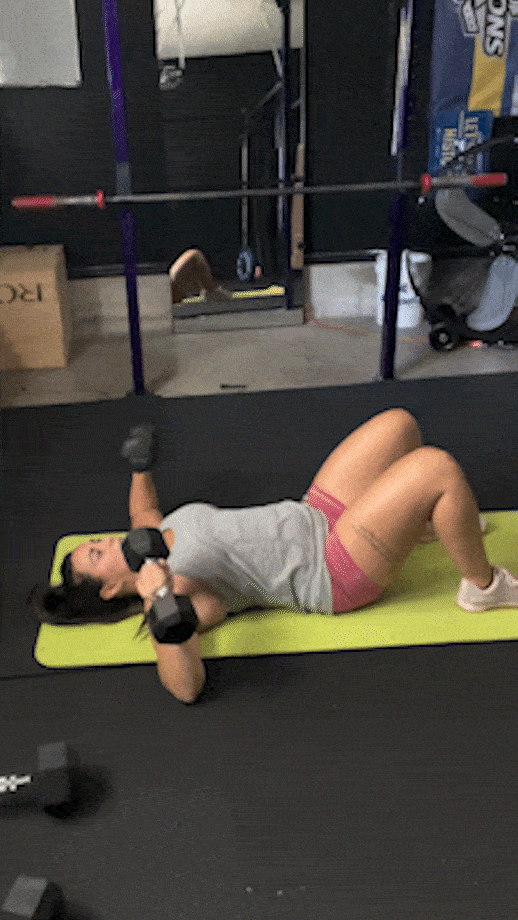
Incline Bench Press
Angle your adjustable bench to roughly 45 to 60 degrees. From here, you will engage in the same movement pattern as a bench press. However, with the incline press, you tend to lower the barbell just under your clavicle and will feel more pressure on your upper chest area and shoulders due to the angle.
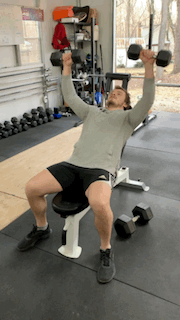
Decline Bench Press
Angle your bench downward at around 15 to 30 degrees behind your head. Stable your lower body by placing free weights or an aerobic step under your feet to ensure a stable position.
With the decline bench press, you will feel more pressure on your lower chest muscles. Make sure, despite the positioning, to keep your shoulders down when you press to avoid shoulder inflammation or compromised technique.
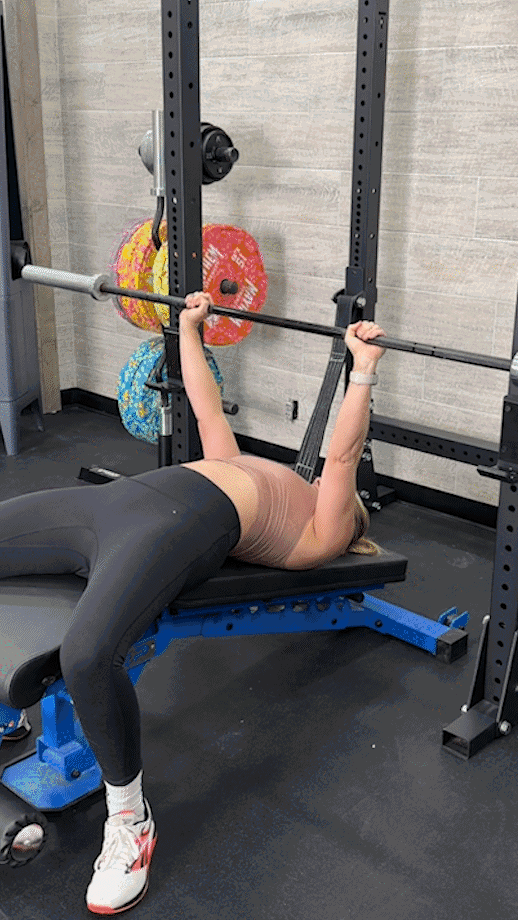
Close-Grip Bench Press
Narrow your barbell grip width so that your hands are slightly narrower than your shoulders’ distance. The narrow grip bench press more efficiently targets your triceps. However, be alert not to bring your hands too close together as this can cause you to lose balance of the barbell or experience too much stress on your wrists or forearms, leading to potential injuries.
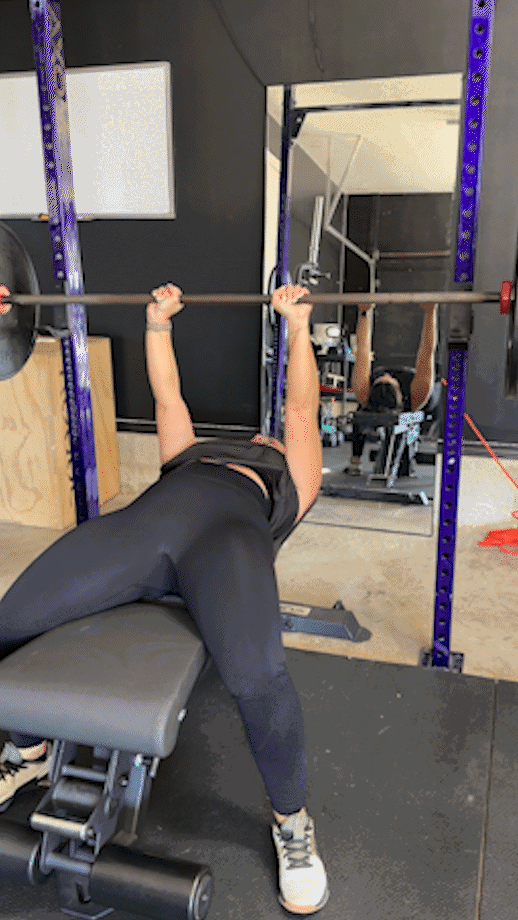
Partial Bench Press
To perform a partial bench press, you’ll lower the bar down about halfway before pressing back up, shortening your range of motion. While partial reps don’t provide the same hypertrophy benefits as a full rep, they can be useful when working around injuries or for position-specific strength—i.e., your form and posture during strict pressing movements.
Smith Machine Bench Press
Set up a bench underneath the Smith machine bar loaded with your preferred weight. Make sure that you can unrack the bar with your arms fully extended while lying down and set the safeties at the bottom of the movement. Unrack the bar, lower it toward your chest, then push the bar up to full extension. Squeeze your pectoral muscles at the top of the movement, then lower the bar back down. Repeat for reps, then rerack the bar before repeating the set.
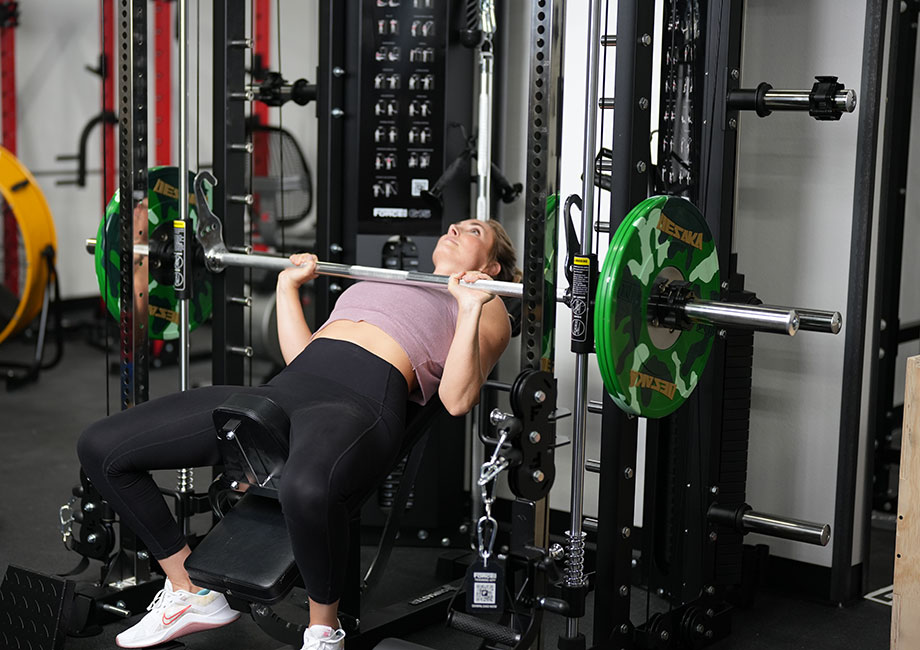
If you’re new to the bench press or don’t happen to have the assistance of a good spotter, the Smith machine bench press is a great option to help you progress this lift safely.
Useful Bench Press Equipment Accessories
Some helpful accessories for your bench press journey:
Dumbbells
Dumbbells allow you to experiment with other free-weight strength training exercises that can contribute to the advancement of your bench press. In addition, the dumbbell bench press is a non-barbell-based alternative to the traditional bench press that offers similar benefits in muscular growth in your upper arms, pecs, and shoulders.
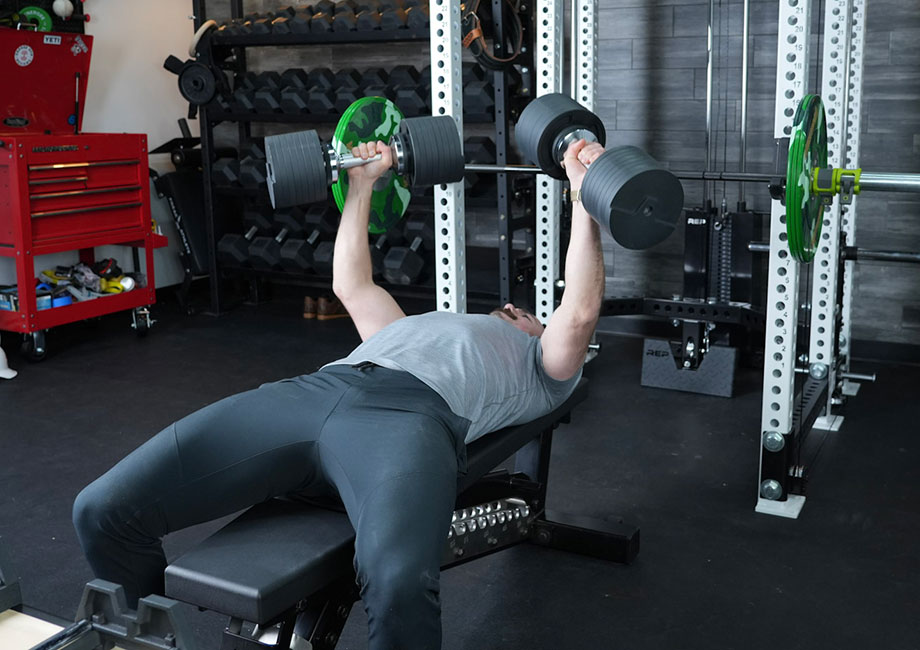
Kettlebells
While maybe unconventional, kettlebells can be a helpful tool in mastering your bench press form and improving your composure.
By attaching kettlebells to your barbell with resistance bands, you can better practice balancing the barbell bench press and working muscle stabilizers. While it may seem a bit crazy, it can help you to practice stabilizing the weight and mastering your technique. This is reserved for more advanced athletes and shouldn’t be attempted unless you are very comfortable with bench press.
Gym Chalk
First and foremost, gym chalk helps absorb sweat and enhance your grip on the barbell while preventing blisters in your hands. However, less known is that in addition to this, chalk can help you to know if you are lowering your barbell where you’re supposed to.
If you have your own home gym, or your gym permits it, applying chalk to the center of your barbell to leave a mark on your shirt when landing can help ensure you are landing where you should be, and if you are doing so consistently.
Wrist Wraps
A pair of the best wrist wraps can come in clutch when you need to keep your wrists aligned for your pushing movements. This budget-friendly accessory also helps to elevate your pressing power and may protect your wrists from strain or injury.

Resistance Bands
Whether lowering or raising the barbell, resistance bands can help you to experiment with pressure while perfecting your bench press form without diving immediately into heavy weights. In addition, resistance bands combined with free weights can add another element of pressure during your workout without needing to add heavier weights you may not be ready to take on.
Bench Press Benefits
The bench press is universally well-known and considered an essential exercise for a reason. While there are several benefits to benching, here are a few of the top reasons to utilize the bench press in your training program.
Helps Build Muscle and Strength
The bench press is the quintessential pressing movement, allowing you to progressively overload for greater gains in your chest, shoulders, and triceps. The strength built on the bench press will also translate to your other lifts.
May Help Improve Bone Health
A 2014 study in the Journal of Family & Community Medicine2 found that weight-bearing compound exercises—particularly the bench press—help improve bone density and quality of life for patients with osteoporosis. While this study focused on older lifters, similar studies have found comparable results in favor of bench press for bone mineral density in college-age adults3.
Has Several Modifications
The bench press is surprisingly versatile. You can perform it with a barbell, dumbbells, Smith machine, cable, resistance band, or even a pair of heavy cans. Don’t have a bench? No problem; you can easily do a floor press to focus on your pressing muscles without the leg drive. You can also play with incline and decline to target your upper and lower pec muscles.
Muscles Worked by the Bench Press
Here’s a quick rundown of the muscles you’ll be targeting when you perform the bench press. For a deeper dive, check out our expert guide: What Muscles Does the Bench Press Work?

Primary Muscles Worked
- Pectoralis major
- Pectoralis minor
- Triceps brachii
- Anterior deltoid
Secondary Muscles Worked
- Trapezius and rhomboids
- Latissimus dorsi
- Serratus anterior
- Biceps brachii
- Forearms
How To Bench Press: FAQs
Are bench presses effective?
The bench press’ claim to fame is its effectiveness. If done correctly, the traditional bench press is one of the most efficient workouts for building upper-body strength.
Is it OK to do bench press every day?
It’s not a great idea to bench press every day because this training frequency doesn’t allow your chest muscles the proper amount of rest and recovery time needed to rebuild for hypertrophy. You should aim to do at least one bench press session per week, two at most.
What is a good weight to bench press?
The weight you can press will differ depending on if you’re using a barbell or dumbbells, most lifters aim to press over their bodyweight. If you’re a beginner, start at half your bodyweight (or less) and then work your way up. If you’re unsure if the load is too heavy, work with a spotter or personal trainer to help you safely determine your working weight.
References
- Rhea MR, Ball SD, Phillips WT, Burkett LN. A comparison of linear and daily undulating periodized programs with equated volume and intensity for strength. J Strength Cond Res. 2002 May;16(2):250-5. PMID: 11991778.
- Shanb AA, Youssef EF. The impact of adding weight-bearing exercise versus nonweight bearing programs to the medical treatment of elderly patients with osteoporosis. J Family Community Med. 2014 Sep;21(3):176-81. doi: 10.4103/2230-8229.142972. PMID: 25374469; PMCID: PMC4214007.
- Almstedt HC, Canepa JA, Ramirez DA, Shoepe TC. Changes in bone mineral density in response to 24 weeks of resistance training in college-age men and women. J Strength Cond Res. 2011 Apr;25(4):1098-103. doi: 10.1519/JSC.0b013e3181d09e9d. PMID: 20647940.


